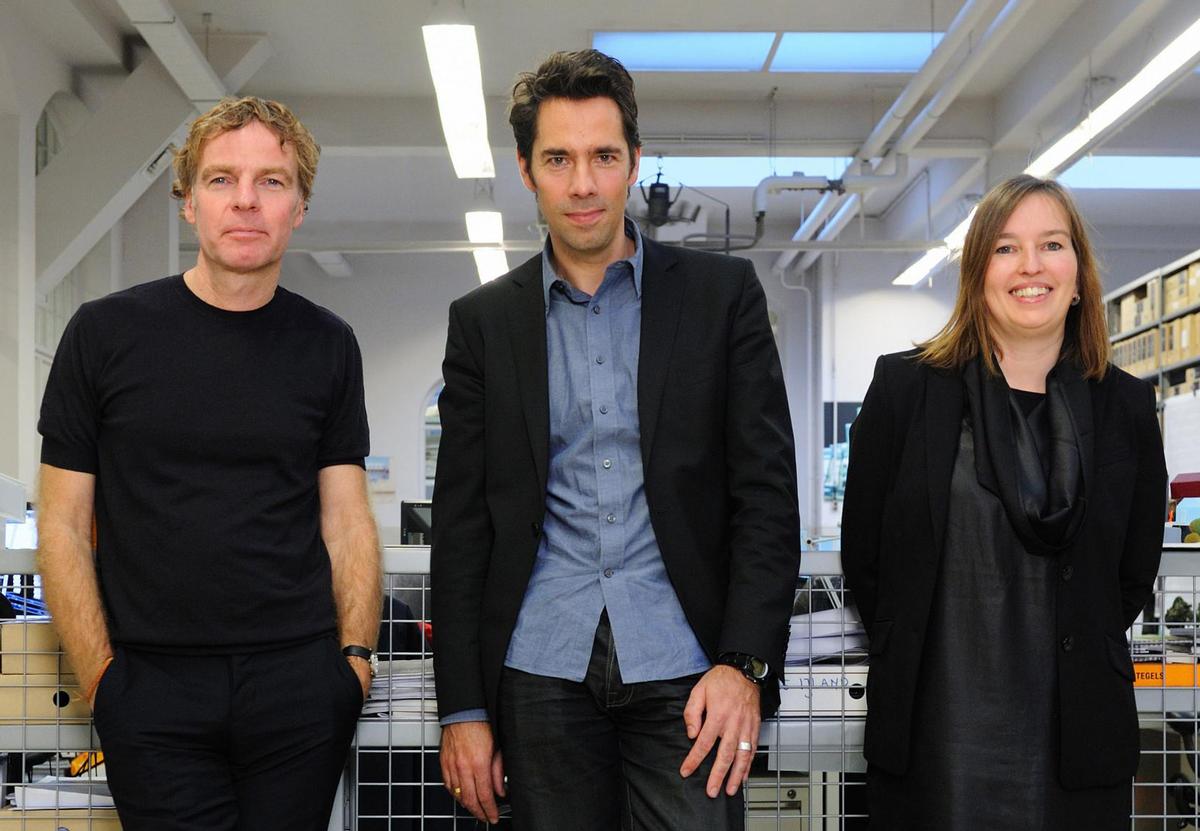see all jobs
EXCLUSIVE: MVRDV founders speak to CLAD about the importance of leisure architecture
The founding partners of Dutch studio MVRDV have told CLAD that architects and developers must consider including a leisure component when designing new structures in built environments.
In an exclusive interview, Winy Maas, Nathalie de Vries and Jacob van Rijs, explained how their own work – including residential and commercial projects such as Rotterdam’s Market Hall – include leisure components to bring life to their surrounding locations.
“Leisure is an economy of itself, and an opener for further development,” said Maas. “Architects discuss the digital economy a lot, but we dismiss the leisure economy a little bit, placing it in tourist zones only. That’s stupid. Bigger companies, like Apple and Google, are hyper aware of the importance of leisure. Developers creating new cityscapes should be aware of it too.”
Van Rijs added: “People are now realising that specific spaces not normally on the leisure agenda can actually play a role in this area. Shopping malls are including more leisure aspects, and this means more design quality and architect involvement is needed. People are not interested in seeing the same design solutions. They want new ideas.”
De Vries said architects should explore all the possibilities of a project before creating a design, and not be afraid “to reinvent the commission” if more could be done to serve the people who live nearby.
“Our projects often fulfil an extra task and help catalyse a turnaround in their environment,” she said. “That's the way it should be, especially if public money is involved. Even if it isn’t, you want to direct people to your buildings and give the space an extra boost. Projects with a cultural element can perform this role.”
All three founders – who have recently hired five new partners as part of an organisational reshuffle – argue that future proofing is essential for developers and architects working on mixed-use projects.
“We have to deal with the fact that the timespan that things are interesting can be incredibly short,” said de Vries. “This is a worrisome aspect of leisure projects. People go there for a couple of years, then everything has to be reinvented. The level of entertainment has to rise and rise.
“It's a bit of a paradox when you make buildings; one the one hand you want to make things to last and have indefinite qualities, on the other hand you have to make designs that can change fast to accommodate new trends and fashions and keep things attractive.”
Van Rijs said that maximising space, by lowering floors and liftings ceilings, is one way to make a building adaptable for alternative future uses, and pointed to the growing popularity of renovation projects rather than new builds.
“Everything is transformation,” Maas added. “You can balance between keeping a lot of a building and introducing smaller new elements, to creating giant new domes that go over existing landscapes. More than ever, our generation believes in transformation because it recognises history and combines it with the future.
“Such biodiversity if good because it leads to specialism and you want cities to be different from other cities. It means people want to go there.”
MVRDV’s ongoing leisure projects include a shopping centre and cultural hub in Beijing, a man-made lagoon in Tainan, and an elevated skygarden in Seoul.
An extensive interview with the trio will be featured in the next issue of CLADmag
More News
- News by sector (all)
- All news
- Fitness
- Personal trainer
- Sport
- Spa
- Swimming
- Hospitality
- Entertainment & Gaming
- Commercial Leisure
- Property
- Architecture
- Design
- Tourism
- Travel
- Attractions
- Theme & Water Parks
- Arts & Culture
- Heritage & Museums
- Parks & Countryside
- Sales & Marketing
- Public Sector
- Training
- People
- Executive
- Apprenticeships
- Suppliers
















































